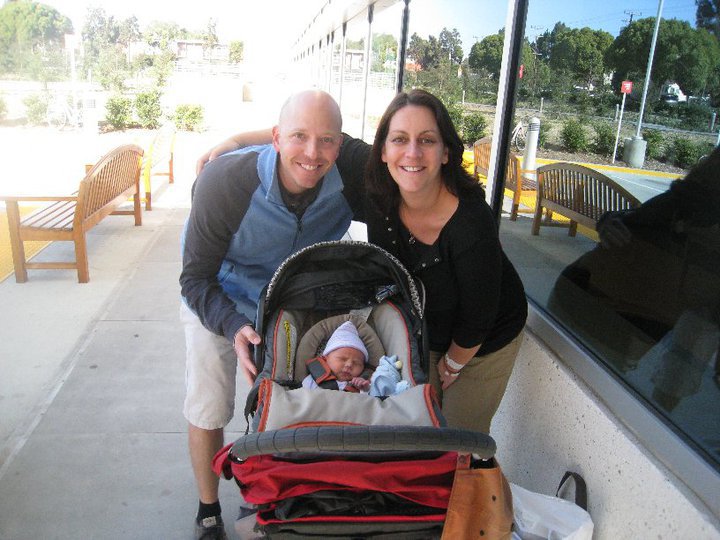When I was pregnant with my first child, I got all the books, made all the lists, and toured all the hospitals. I had a birth plan (vaginal) and a parenting plan (to be laid-back and to not sweat the small stuff). When I found out in my third trimester the baby was breech, I was disappointed, but quickly adjusted: C-section it is. On the hospital tours, we were shown each hospital’s NICU department (the neonatal intensive care unit, for those who have been lucky enough not to have to learn that acronym), but it wasn’t the deciding factor in my choice. In fact, it wasn’t really even a consideration. I chose the hospital that felt more like the W hotel, bright and airy—the fact that its NICU was good was icing on the cake. No one plans to spend time in the NICU, not even planners like me. It was always just some far-away “what if.”

Until it wasn’t.
At 38 weeks my baby stopped moving inside me, and no amount of poking or prodding would do the trick. The planned C-section quickly became an emergency C-section, and they cut my son from my body to save his life. He was rushed to the NICU before I could even hold him. They sewed me up and removed the now-ruptured placenta that had caused all the ruckus in the first place.
No one plans to spend time in the NICU, not even planners like me.
A kind nurse brought me to the NICU while I was still on a gurney, barely able to lift my body up, let alone control my surroundings. The room was small. I was in the way, a disturbance, a bull in a china shop, but the china was frail babies (my baby!) and machines keeping them (him!) alive. My son was intubated, with multiple wires taped to his tiny hands and legs and chest, connected to machines that beep and alarm. He was seven pounds, eight ounces, and 19 inches. The perfect size, except for the possible damage we couldn’t see yet, manifesting on the inside from a possible lack of oxygen due to massive blood loss. I couldn’t touch or hold him even if I’d had the strength to reach out. He was under a plastic dome, a boy in the bubble, no longer protected in my body or under my care, no longer following the plans I had meticulously laid out for us.
First lesson of motherhood: the level and tier of the NICU matters, not the view from the hospital room or the fresh paint and new carpets. Suddenly my laid-back, don’t-sweat-the-small-stuff plan to be a cool parent was blown. That’s what happens when your baby almost dies before you have a chance to meet them. In parenting, sometimes the what ifs are and the never wills will.
We went home days later without him. Every phone call, every visit, every nursing became an exercise in worry. Once he came home too, every delay, every quiet moment as he slept, every cry as he wouldn’t sleep became the narration of my life. My parenting style would not be molded after the books I read or the plans I made, after all, but rather from a place of worry and fear. I admit: This wasn’t how I envisioned being a mother. But no other harm was going to come to my child again, if I could help it.
In parenting, sometimes the what ifs are and the never wills will.
We may have left the NICU after 13 days, but the NICU never really left us. I have spent years trying to reroute: to parent the child in front of me, not the baby rushed away from me. Admittedly, I am not always successful in that. (My children would tell you I have no chill.) It didn’t help that my second child ended up in the NICU as well. Yes, really. I went into labor at 34 weeks with him, but this time I was prepared for the NICU as a possibility. It was part of the plan.
The NICU provided for me the lesson that everything can go terribly wrong from the outset. It’s a valuable lesson, and while it may have made me a more worried mother, it has also made me a very determined one and one who will raise her children by any and all means necessary. Most mothers would go to war for their children, but being in the NICU means we just ended up in the trenches earlier. The NICU is a dangerous place, but it is also the place that caught us and held us up.
Despite the terror of the NICU, it became a place of solace, a promise of a place to heal. There’s no guidebook or road map to raising another human being, but there are safety nets along the way.
The irony is that as NICU parents, we actually don’t sweat the small stuff. It’s the big stuff, the life and death stuff, that has defined our path. I honestly don’t care if your hair is brushed or your shirt is stained. Are you playing and learning and having fun? Are you alive? It’s that basic. Because that is the gig—to give life and then sustain it. It’s been nice to let some of that small stuff go.
Most mothers would go to war for their children, but being in the NICU means we just ended up in the trenches earlier.
My children, now a teen and preteen, may not remember their NICU stays, which is exactly how it should be. But I remember and I am still recovering, all while trying to help my children flourish despite my worry. Or at least that’s the plan.
Like this piece? Subscribe to our newsletter for real stories about women on their journey to motherhood.
